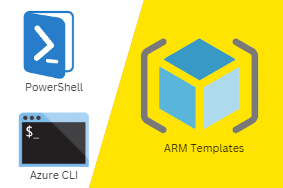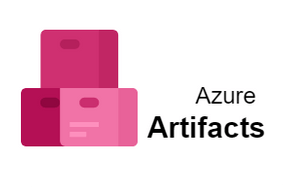Google Cloud Platform offers a suite of tools and services that can help organizations of all sizes reach their business goals, from startups to enterprises. But how do you know which Google Cloud Platform solutions will work best for your organization? From machine learning to data warehousing to online training, the range of Google Cloud Platform projects goes well beyond the products you’re probably familiar with like Google App Engine and Google Search Appliance. In this list, we’ll introduce you to 10 projects from Google Cloud Platform that you might not know about but can benefit your organization in unique ways.
1) Infrastructure Migration Services
As you’re designing and building your applications, it’s worth thinking about how you’ll eventually migrate them to a cloud environment like GCP. This service allows you to move one or multiple servers and applications between on-premises data centers and GCP with no application downtime. This is particularly helpful if you have many existing on-premises systems and require some time to modernize them before they are migrated into GCP. Migration services can also be used during development because they can simulate an actual migration on your local system while ensuring that your production data stays put. Conversion from Amazon EC2 Instance Store Images: If you are moving workloads from Amazon EC2, you may have container images stored in EBS volumes; however, those cannot currently be uploaded to GKE. In order to convert those images for use in your GKE environment (which does support running containerized workloads in EBS), there is an open source tool available through Google called Container Conversion Service (CCS). CCS supports converting these types of EBS images so that they may be deployed as stateless applications within your GKE infrastructure.
2) App Engine Managed VMs
App Engine is a great choice for developers who want to get their app in front of users as quickly as possible. It takes care of scaling, load balancing, and automatic backups while you concentrate on building your code. Managed VMs also makes it easier to prototype an idea without having to worry about managing servers. The downside is that apps built with App Engine are constrained by its inflexible pricing structure. This can make sense if you’re building a simple app or using App Engine alongside other cloud services—but for more advanced projects, it may not be worth it. If you do plan to build something big with App Engine, read our post on what it really costs to run your own server.
3) Deployment Manager
Deployment Manager is an open source software utility created by a team at Google that helps organizations keep track of their applications and how they’re deployed. The tool was designed with small to medium-sized companies in mind, but it can be used in enterprises as well. Deployment Manager runs on Google App Engine and integrates with other GCP tools like Stackdriver, BigQuery, and IAM (Identity and Access Management). Currently, version 1.2.2 is available for download from GitHub. A full list of features is available on GitHub’s release page . At one point , Google even considered releasing a commercial version of Deployment Manager called Project Velocity, which would have been designed specifically for enterprise use cases. Unfortunately, due to low demand, Project Velocity was never released as a standalone product. If you’re interested in using Deployment Manager commercially (i.e., using its code base internally or putting it into production), contact your domain administrator at Google via your domain account email address or talk to someone through your organization’s support portal if you don’t have access yet; you might need some authorization codes or client secrets before getting started.
4) API Manager
Google’s aim with API Manager is to manage your APIs, so you can easily share them with both developers inside and outside of your organization. To facilitate that sharing, API Manager creates a central hub for all of your APIs and does its best to limit their exposure—allowing you to offer some APIs publicly, for example, while restricting others to internal users only. One powerful feature? With just a few clicks, you can create a fully functioning mobile app based on one of your private APIs in about 30 minutes. As far as speed goes, API Manager gives you granular controls to monitor how many requests are coming from what IP addresses, how quickly they are being served and other metrics that can help drive decisions around performance improvements. It even allows you to prevent certain IP ranges from accessing specific resources without having to constantly add/remove permissions manually. And if there’s an outage or system failure anywhere along the way—the idea being you shouldn’t have to take your eyes off monitoring performance-related issues–API Manager automatically notifies clients through multiple channels including email, SMS and webhooks. Lastly it supports versioning, custom domains and SSL encryption between servers.
5) Dataflow
Google’s Dataflow platform takes all of your cloud-based data, cleans it up, and moves it to other services. No need to write a bunch of custom code: With Dataflow, you can transform and move data in real time. The service also comes with built-in security measures—it encrypts all data automatically as it passes through servers—so that no one can steal your information. It’s even possible to push information from one set of sources (say Google Analytics) into another (Google BigQuery) if needed. And since everything is designed for use with big data sets, there are plenty of options for scaling later on. For example, Dataflow has tools for Apache Kafka integration so that you can run large batches without skipping a beat. In fact, Dataflow gives developers control over every aspect of their workflow so they’re never restricted by what Google supports. Now that’s big data at its best!
6) BigQuery
If you’re a developer, chances are good that you’ve used at least one of Google’s developer tools. A while back, they acquired Metaweb (creator of Freebase) and released BigQuery, a tool that makes it simple to query massive datasets. Back in 2012, they also acquired Keyhole and released Polyline—now known as Earth Engine — which lets users take high-resolution satellite imagery and turn it into 3D representations of cities. The potential for big data analysis is huge; so much so that some universities are starting to incorporate it into their curriculums . It could be argued that there is no more powerful infrastructure in terms of querying large amounts of data on an affordable basis than BigQuery. And if you want to use any of its features, like map views or even using Google Maps itself, all it takes is understanding SQL and Python scripting language. For example: You can quickly query your latitude/longitude table using those languages… Yes! Just 1 line of code!
7) Stackdriver
Cloud monitoring for everyone – Today, most software is developed to run in production on someone else’s infrastructure—and many of us don’t get an SLA from those providers. Stackdriver lets you monitor and manage your applications on Google’s infrastructure, giving you confidence that your apps are running at all times. With Stackdriver, you can keep track of how your stack is performing by getting notified in real time of system metrics like CPU utilization or disk I/O as well as any events occurring within your app. This allows you to easily monitor and debug a wide variety of issues related to performance: slow database queries, CPU spikes causing requests to be served slowly or timing out, queues backing up because not enough capacity is available. Stackdriver also integrates with other tools that developers commonly use to build, test, and deploy their services so you only have one place to go when things go wrong. For example, it offers integrations with GitHub, Jenkins & Bamboo CI systems, Docker containers (through Kubernetes Engine), Amazon Web Services (through App Engine flexible environment), ServiceNow ITIL workflow automation systems). Besides being built on top of Google Cloud Platform (GCP) technologies such as Cloud Datastore and Bigtable, Stackdriver uses open-source components such as OpenTSDB for metrics storage so it integrates seamlessly with GCP technologies.
8) DNS Service
DNS is one of those things you don’t think about unless it goes wrong. Despite its crucial role, DNS service has historically been owned and operated by specific companies and ISPs, which means that most people haven’t had a ton of options when it comes to who they can trust to keep their domain names safe and secure. But times are changing. Cloudflare launched its public DNS service in April 2016, promising fast, security-focused DNS service with a built-in free CDN thrown in for good measure. Since then, several other players have joined what is becoming an increasingly competitive market. If your website or application sits behind a custom name server, check out these five services, take them for a spin, and see how they stack up against your current provider. And if you’re considering moving to a new service but aren’t sure whether switching over would be worthwhile, here’s how some companies got started using Cloudflare DNS Service: Strava: Founder James Quarles weighed his options before choosing Cloudflare as his company’s default DNS provider. Cloudflare was pretty compelling due to solid performance metrics and cost.
9) OpenCensus
OpenCensus is a library that makes it easy to add custom metrics to your Golang applications for monitoring and debugging. It provides comprehensive metrics dashboard and makes it possible to send metrics from production services to other third-party monitoring systems, e.g., Prometheus, StatsD or InfluxDB. The project is hosted on GitHub, written in Go and licensed under Apache 2 license. The main idea behind OpenCensus was to make it easier for developers working with microservices and distributed systems by providing instrumentation framework, which collects metrics and allows adding context-aware system telemetry to application binaries so you don’t have to install any agents on production servers—they can all be built into your app’s binaries! Also one of their most interesting features is an Automatic Context Assignment (ACA) feature, which automatically assigns contexts based on runtime traces collected during execution. Thus, no context configuration required! Last but not least — they provide not only an open source solution but also an SaaS version called Datadog Agentless — very convenient if you do not want to bother setting up things manually like services & certificates creation etc. This software is quite new and might still lack some advanced features like alerting but works pretty well especially if you know how to use those other tools separately already.
10) Pub/Sub
Google Cloud Pub/Sub is a service for sending and receiving messages to and from applications, databases, and services. It helps you decouple systems so they can scale independently. As an added bonus, you can use any of your preferred languages or third-party libraries (Node.js, Python, etc.) to write subscribers and publishers; no need to use Java or other JVM-specific technologies when building on GCP. [Google Cloud Platform] [Pub Sub Docs]
ProTip: The Android team’s Mobile Backend Starter uses GCP Pub/Sub to create fire and forget messaging between their server components. When new data appears in their database, it sends out a message which triggers a corresponding action with minimal delay. This approach allows each system to operate smoothly without blocking resources during synchronous operations.



0 Comments